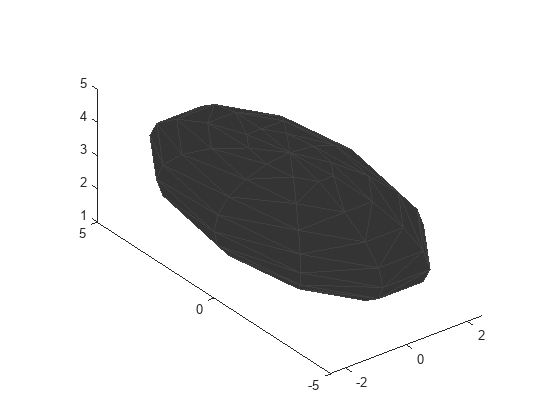extendedObjectMesh
Mesh representation of extended object
Description
The extendedObjectMesh represents the 3-D
geometry of an object. The 3-D geometry is represented by faces and vertices. Use these object
meshes to specify the geometry of a Platform for
simulating lidar sensor data using monostaticLidarSensor.
Creation
Syntax
Description
mesh = extendedObjectMesh('cuboid')extendedObjectMesh object, that defines a cuboid with unit
dimensions. The origin of the cuboid is located at its geometric center.
mesh = extendedObjectMesh('cylinder')
mesh = extendedObjectMesh('cylinder',n)n equally spaced vertices around its
circumference.
mesh = extendedObjectMesh('sphere')
mesh = extendedObjectMesh('sphere',n)n, of the
spherical mesh. The sphere mesh has (n +
1)2 - 2 vertices and
2n(n - 1) faces.
mesh = extendedObjectMesh(vertices,faces)vertices and
faces set the Vertices and
Faces properties respectively.
Properties
Object Functions
Use the object functions to develop new meshes.
translate | Translate mesh along coordinate axes |
rotate | Rotate mesh about coordinate axes |
scale | Scale mesh in each dimension |
applyTransform | Apply forward transformation to mesh vertices |
join | Join two object meshes |
scaleToFit | Auto-scale object mesh to match specified cuboid dimensions |
show | Display the mesh as a patch on the current axes |
Examples
Version History
Introduced in R2020b


